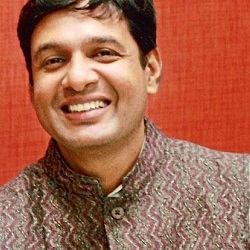
“Truth is Beauty. Beauty is Truth” – John Keats
There is possibly nothing more eternal and powerful than truth. Truth, that prevails even in the most dire situations. It always finds its way to victory, like Nature and Life. And it’s perhaps this invocation of truth that led part-time independent filmmaker, Ravi Shankar to make his debut film, Punyakoti.
Punyakoti, the first animated film in Sanskrit, is a story that speaks of nothing but the truth. “Punyakoti is a story of speaking the truth. I thought this was very relevant to our times. So I picked it up as my debut film,” Shankar exclaimed.
Based on an episode from The Mahabharata, which is also prevalent as a folk-song in South India, Punyakoti is about a truth-speaking cow. The plot is an imaginary take on the circumstances that led to the encounter between the cow and a tiger in a village that is facing an impending drought. The script of the movie is from a children’s picture book by the same name, written by Shankar himself. The movie follows a five Act structure and is modelled along the lines of any international quality production in terms of creative and structural finesse.
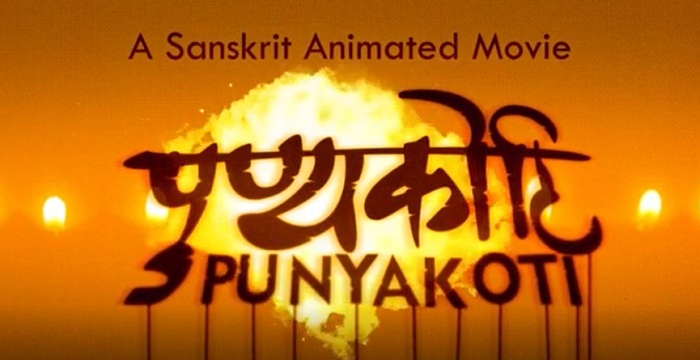
Punyakoti as a film has also defied the norm by choosing Sanskrit as the language for communication which isn’t much prevalent in today’s time. When enquired about why did he choose the same for his first film he said, “Sanskrit is the most scientific language in the world. Its grammar and phonetic representations are hailed as best, structurally. And Sanskrit is not Indian. As Mel Gibson explained about his characters speaking in Yucatec Mayan language throughout his movie Apolcalypto- ‘I think hearing a different language allows the audience to completely suspend their own reality and get drawn into the world of the film.”
Sanskrit has been a context free language and the mother of all Indo-Germanic languages. It is the bedrock of the only living civilisation in the world. According to the information provided by the director, there is still a great amount of scientific and literary wealth hidden in the language that can help humanity in many ways. Scholars from the West have concurred that just like the Greek aesthetics rediscovered during Renaissance spurred the progress of Science and Arts, a revival of Sanskrit could take human progress to the next level. “ Also, the language helps in development of cognitive skills in children.The movie is, thus a great way of introducing the language to them. And we have taken one small step to bring the language out of its traditional confines,” Shankar quoted.
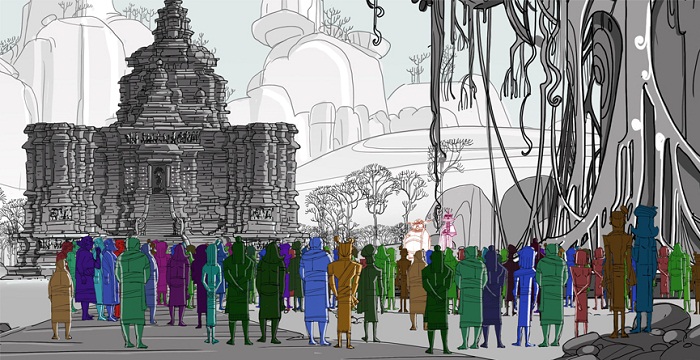
Apart from the concept, what makes the 80-90 minutes film stand out, is its unique animation style. The style is inspired by Indian folk-art with a mix of traditional and digital animation techniques with more emphasis on the storytelling than on the technical prowess. “We have invested a lot of time to bring out a style that draws upon the Indian temple art and puppetry- the forms and style which follows the proportion and aesthetics of Indian folk-art/sculpture. We have also blended and rendered portion of the movie using stylised folk-art with an attempt to render some of the staging and movement techniques that are mentioned in ancient art and dance manuals. This has been made possible because of the association of the traditional craftsmen and artists who have supported the venture,” Shankar noted.
Another consideration for the team has been the frugal budgets that they have been working with paying a lot of emphasis on good storytelling in an economical production design to do justice to the story within the constraints. “Almost after two years and several trials, we have chosen a small core team of animators from over 100 worthy applicants. Most of the team members in the core team have been pioneers of the Indian Animation Industry when it took shape 20 years back,” he further added.
Punyakoti has got a plethora of talents contributing to the creative team. Accomplished actor and director, Revathi is the voice of Punyakoti. Hollywood actor Roger Narayan has given the voice of Kaalinga (Punyakoti’s master). With an experience of over 40 years in Sanskrit Drama and Literature, Prof. SR Leela (who voiced for Neena Gupta as Draupadi in GV Iyer’s Sanskrit classic, Bhagawad Gita) will supervise the dubbing being an accomplished filmmaker herself.
Anupama Hosakere and Vidyashakar Hosakere, who have been reviving traditional puppetry and exponents of traditional storytelling in Sanskrit and folk traditions are also supporting the project with National Award winner, Manoj Kannoth serving as an editor. Music is composed by the Indian film music maestro, Sri Ilaiyaraaja.
Former Infosys CFO and Manipal Group chairman M D Pai is mentoring the team besides Manipal Hospitals chairman Swaminathan Dandapani and the dean of Art Institute of Atlanta also being on board. Samskrita Bharathi – an institution that has been propagating spoken Sanskrit for the last 30 years is providing the project with Sanskrit support apart from industry veterans who have actively present to guide the project.
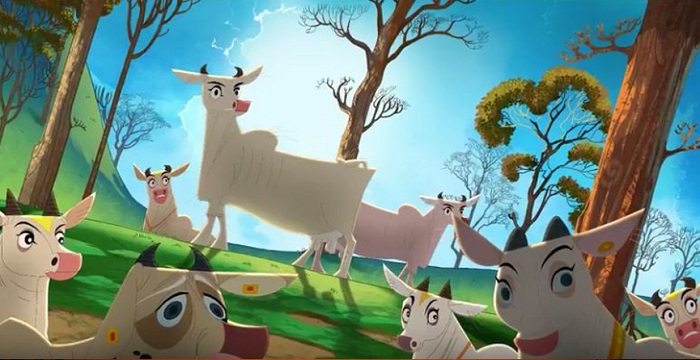
A project as unique and massive as this surely had its share of challenges and restrictions. Shankar informed the plight of keeping the creative team in place, “Getting expert 2D animators was a big challenge for us. Even talented animators were not disciplined. You had to keep following up as the quality of output was not consistent.”
Instead of assigning the project to a single studio, the Punyakoti team had opened the doors to the best animation talent around the world. “Each scene in the movie have been designed by leading animators and virtually brought together through collaborative technologies.”
In fact they validated the concept entirely through crowdsourcing, “When we first conceived the movie, we wanted to validate its feasibility and acceptability so we went on to raise our initial funding through the crowd. In 2015, Punyakoti became one of the largest funded project of its kind with over 4 million Indian Rupees from the crowd through Wishberry, a premier crowdfunding platform in India.”
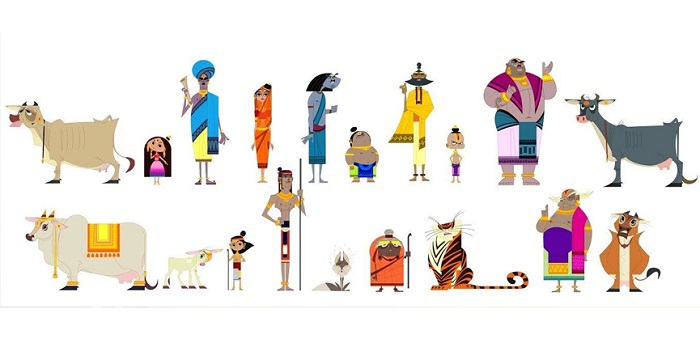
Shankar informed that the project was also collaborated on Google and other cloud technologies for managing and communication. “We tied up with a Pune based collaborative platform Gamedoora to drive online collaboration, asset and project management. The digital archiving and asset management was done through another innovative Chennai based startup, CineHive. Today, we can proudly say that we have one of the most efficient production pipelines for an animation production that rival any big studio.”
Having completed the pre-production and dubbing the team have started using the funds. On a broader canvas, Punyakoti conveys the message of leading a life of integrity against all odds and living in harmony with nature. “I have learned that you have to be patient to see good results and persevere. You don’t fail until you give up. I also have learnt that the world has many good souls. As a filmmaker, I have learned to take out many things that don’t add value to the movie,” Shankar concluded.

